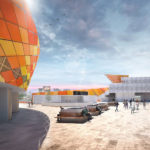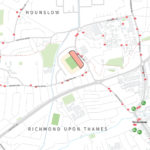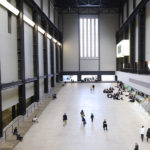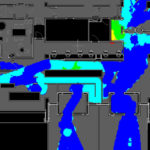Planning for a return to stadiums
There seems to be some cautious optimism that 2021 will (hopefully!) be the year that full crowds will make a return to stadiums and music venues.
However, even before the Coronavirus lockdown, attendance at live sport and music events was in decline due to the high-tech and HD viewing experiences that are increasingly available and affordable to many fans.
Stadium operators will face several challenging issues when fans can return. These will range from ensuring and managing a safe evacuation, general crowd management and operations, and busy concourses with queues and congestion. All these factors can make life very difficult for stadium staff, as well as impact on spectators’ matchday experience, resulting in potentially reduced spending and profits.
So how do we make sure that spectators want – and feel comfortable and safe – to come back when restrictions are lifted or loosened? And what can stadium operators and owners do to enhance their visitors’ experiences, and to plan and design for seamless spectator movements, transactions and journeys to keep fans coming back week after week, helping to maximise stadium profits after so many months of closure?
Increasing fan engagement using technology
Technology – such as using wi-fi connectivity, Bluetooth, sensors and cameras – is a powerful tool that, by gathering important information, can increase fan engagement and optimise spectator movements around a venue; all of which contributes to happier fans willing to spend more money on event days.
Understanding the power of real-time data is key. Tracking spectator movements around a stadium can provide crucial insight and a deeper understanding of how people move through spaces and help operators identify problem areas and uncover potential solutions.
Real-time data can also be used by event staff to identify any particularly busy areas and re-route spectators to alternative locations if required. This immediate transfer of live data is a crucial tool in managing event crowds and keeping spectators safe.
By identifying trends in crowd movements from this data collection, stadium operators are also much better equipped to develop operational crowd management plans that will ensure the efficient movement of spectators through their space. This will help in achieving seamless event day movements and fan safety in the event of an evacuation or emergency.
Wayfinding and navigation
As well as gathering useful information, mobile apps can be used by spectators for wayfinding (either within the stadium, or to/from transport nodes) or for pre-ordering food and drinks for half-time or interval periods (for example). Mobile apps can also use real-time data to inform spectators about current queue lengths or crowding, redirect them to quieter areas of the stadium, or advise them to wait in their seats for a period. These solutions can have hugely positive impacts on spectator movements and circulation space within the stadium, by reducing queues at concessions and helping to evenly distribute demand to underutilised areas.
Crowd flow modelling
Crowd simulation software is an effective means of analysing and visualising the impact of operational crowd management measures or general spectator movement around a venue.
We use simulation modelling to test more complicated environments for our clients, such as a stadium concourse during half time. In this instance, the capacity is not just a function of the dimensions of the space (even though this is often how a concourse is designed). For example, in stadium concourses, you can find people entering and exiting, circulating, dwelling, and queueing. Complicated and conflicting movements need to be assessed to ascertain realistic capacities. How the use of wayfinding and navigation apps will affect crowd movements in these spaces is also important to understand.
Looking ahead
Many of us at Momentum are sports fans and are keen to be back in stadiums, grounds and arenas to support our teams. But in these uncertain times it’s crucial that venues are able to open up effectively and above all – safely – taking into account ongoing restrictions and guidelines that could be in place for some time to come. We look forward to working with our clients in the coming months to help them overcome this challenge.







